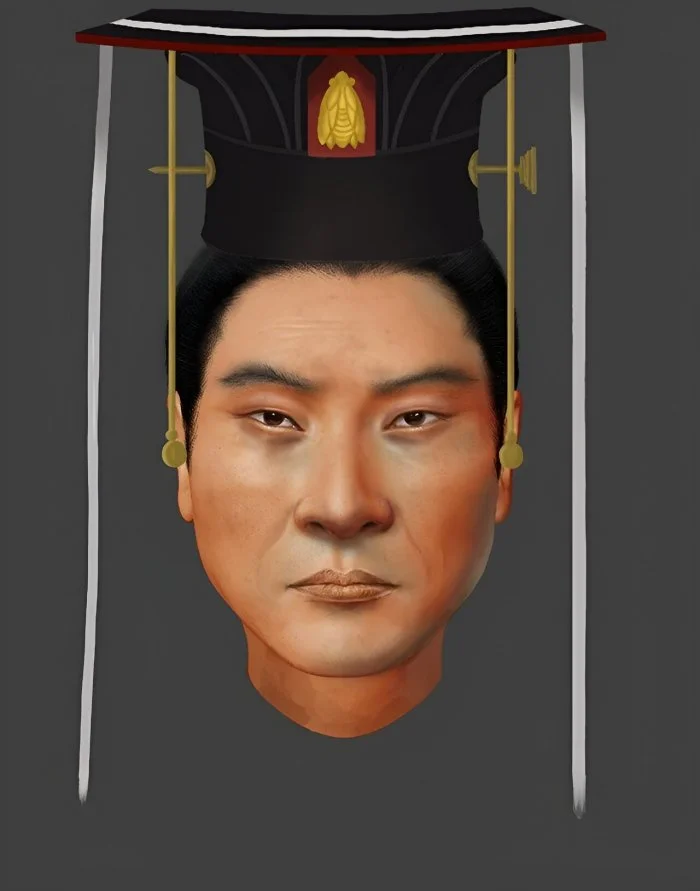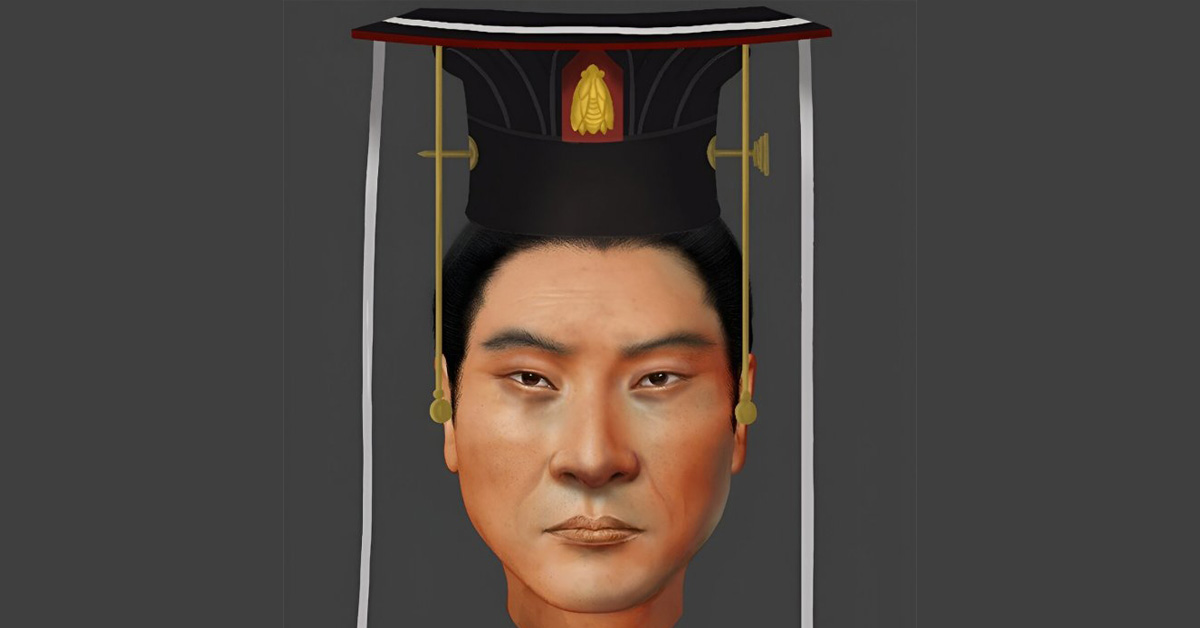Face of Chinese emperor who ruled 1,500 years ago reconstructed using ancient DNA
The face of a Chinese emperor who lived around 1,500 years ago has been reconstructed by a team of researchers, revealing the appearance of the ancient ruler.

The facial reconstruction of the emperor is the result of a study, published in the journal Current Biology, in which researchers extracted DNA from his remains.
The results of the study—led by Panxin Du with the Institute of Archaeological Science at Fudan University in Shanghai—cast new light on the emperor’s death, as well as the origin and migration patterns of the ethnic group he belonged to.
The ruler in question was Emperor Wu of China’s Northern Zhou dynasty, whose reign lasted from A.D. 560 to A.D. 578.
Between the 4th and 6th centuries A.D., the north and south of China were politically split into different dynasties. Northern Zhou was one of the Northern dynasties that emerged in this era.
The Northern and Southern dynasties period came to an end with the unification of China proper by Emperor Wen of the Sui dynasty.
The Northern Zhou dynasty was ruled by people of the Xianbei ethnic group—an ancient nomadic people that lived in what is today Mongolia and northern/northeastern China.
“Our work brought historical figures to life,” Pianpian Wei, a co-corresponding author of the study at Fudan University, said in a press release. “Previously, people had to rely on historical records or murals to picture what ancient people looked like. We are able to reveal the appearance of the Xianbei people directly.”
Emperor Wu was a highly influential ruler who built a strong military and unified the northern part of ancient China after defeating the Northern Qi dynasty.
In 1996, archaeologists discovered the emperor’s tomb in northwestern China in 1997, which contained his remains, including a nearly complete skull.
For the latest study, researchers extracted genetic material from these remains, some of which contained information about the emperor’s skin and hair color. The team combined this data with an examination of his skull to reconstruct the ruler’s face in 3D.
The genetic material indicates that the emperor had brown eyes, black hair and skin that was dark to intermediate in color.
The results also suggest his facial features were similar to that of people living in northern or eastern Asia today.
“Some scholars said the Xianbei had ‘exotic’ looks, such as thick beard, high nose bridge, and yellow hair,” Shaoqing Wen, one of the corresponding authors of the study with Fudan University, said in a press release. “Our analysis shows Emperor Wu had typical East or Northeast Asian facial characteristics.”
The study’s genetic analysis showed that the Xianbei people intermarried with ethnic Han people when they migrated southward into northern China. (The Han are the largest Chinese ethnic group making up around 90 percent of the total mainland population today.)
“This is an important piece of information for understanding how ancient people spread in Eurasia and how they integrated with local people,” Wen said.
The genetic results also shed new light on the death of Emperor Wu, who passed away at the age of 36. Some experts have argued previously that the emperor died of illness, while others believe he was poisoned by rivals.
The team’s analysis of his DNA, however, has found that he was at increased risk for stroke, which might have contributed to his death.
This finding corresponds with historical records that describe the emperor as having drooping eyelids, an abnormal gait and aphasia (a language disorder)—all potential symptoms of a stroke.




